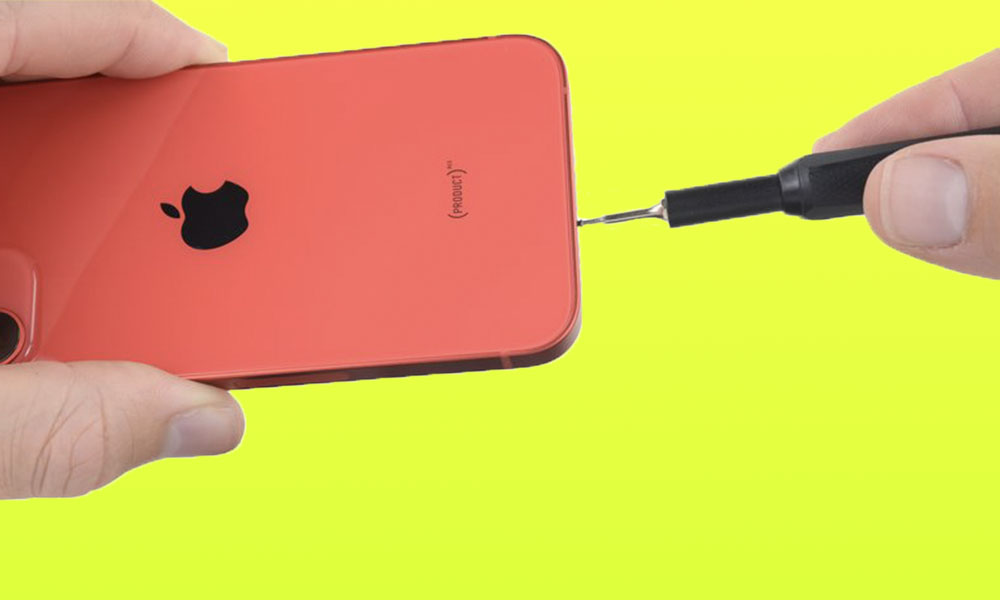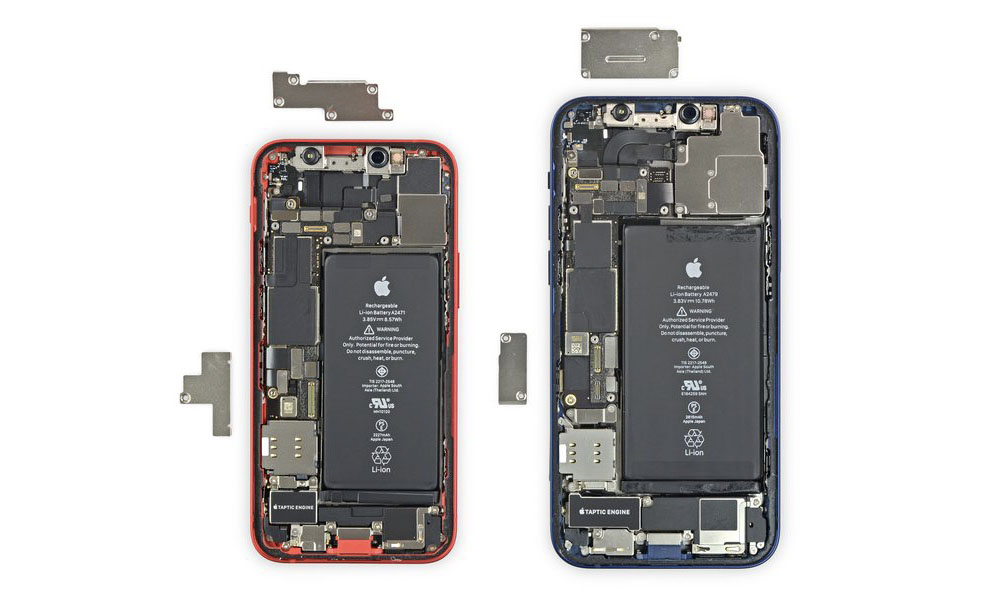iPhone 12 mini Teardown Shows Miraculously Miniaturized Designs
 Credit: iFixit
Credit: iFixitToggle Dark Mode
After Apple released the first two models in its new iPhone 12 lineup last month — the 6.1-inch iPhone 12 and iPhone 12 Pro — we saw the usual iFixit teardown that surprised us with how similar the two devices were inside, right down to interchangeable displays.
Now with the iPhone 12 mini having hit the streets, iFixit is back with a teardown of the smallest iPhone that Apple has made in years, revealing exactly how the company has been able to pack all of the same technology as the 6.1-inch iPhone 12 into a considerably more compact 5.4-inch frame.
The secret of course, is in miniaturization.
Apple has made as many of the standard iPhone 12 components as it can considerably smaller while still providing the same functionality as their larger counterparts, allowing it to achieve the exact same feature set between both iPhone 12 models.
For some components, the smaller size isn’t especially surprising, to be fair. For example, while Apple shrunk the Taptic Engine, there’s a direct relationship between the size of that component and the size of the iPhone that it’s placed in — a smaller iPhone doesn’t require as much power to make it vibrate.
In other areas, however, Apple’s accomplishments with the iPhone 12 mini are more remarkable. For instance, while obviously the speakers need to be smaller as well, most early reviewers have suggested that they don’t sound smaller — that the iPhone 12 mini delivers the same quality of stereo sound as its larger 6.1-inch sibling, and in fact you’d be hard-pressed to tell the difference in a blind listening test.
iFixit actually tore down both a U.S. and European model of the iPhone 12 mini, since of course these differ in terms of the 5G technology packed into them, but didn’t find any compromises in Apple’s smaller mmWave iPhone 12 mini versus the non-mmWave model.
Smaller Battery
That said, one component Apple couldn’t really make any smaller without sacrificing some functionality was the battery; the laws of physics and chemistry simply mean that a smaller cell is going to provide less power, and while the iPhone 12 mini does pack in a higher-capacity battery than the 2020 iPhone SE — 8.57Wh versus 6.96Wh — it still falls short of the 10.78Wh of the 6.1-inch iPhone 12, yet it’s driving the same power-hungry components.
So make no mistake, with the iPhone 12 mini you will be trading off battery life in order to have a smaller iPhone, and that’s totally unavoidable due to the way batteries work. After all, if Apple could create a smaller cell that provided the same battery life as the larger iPhone 12, that could only mean that it isn’t using the most efficient battery cell it could in the larger model.
Same Cameras
It’s important to keep in mind, however, that the iPhone 12 mini includes identical camera hardware to its 6.1-inch counterpart. Camera components like lenses and sensors are also subject to the laws of physics, so to provide the same photographic features, this was one area that Apple wasn’t willing to skimp on. In fact, it’s probably the main reason that it was necessary to use a smaller battery.
One interesting thing that iFixit did note is that the iPhone 12 mini camera may actually be easier to repair than that of the standard iPhone 12. Late last month, iFixit reported that it wasn’t possible to swap cameras between iPhone 12 units, leading to speculation that Apple may have been deliberately hampering independent third-party repairs — something Apple has been fighting against for years.
This theory is also being fuelled by the fact that Apple’s internal training guides now indicate that, starting with the iPhone 12 models, it will be necessary for technicians to use a proprietary Apple System Configuration tool that’s only available to authorized service providers in order to replace screens and cameras — something it started doing with batteries last year.
While it’s unclear at this point whether the problem with the iPhone 12 is a one-off bug or a deliberate move by Apple, iFixit notes that the iPhone 12 mini does not appear to share the same problem, even though it uses the exact same camera hardware.
Overall, even with the smaller size, iFixit was very pleased to find that the 5.4-inch iPhone 12 mini is no more difficult to repair than either of the 6.1-inch versions, assigning it a “repairability score” of 6 out of 10, noting that display and battery repairs are “well-prioritized” in the design, and most major components are modular enough to make for easy replacement. Cons otherwise remained about the same as for the rest of the iPhone 12 family, including the usual concerns about specialized screws, waterproofing measures getting in the way, and the glass covering on the rear housing not being separately replaceable.







